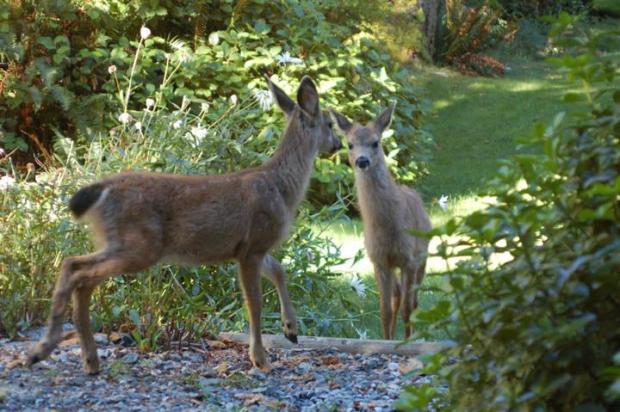Region
Victoria
General comments about deer-resistant plants:

- The most reliably deer-resistant plants are those with acrid sap like Euphorbia; strongly scented foliage like lavender, sages and oregano; dry-loving plants like Cistus and Halimium; fuzzy leafed plants like Stachys and Pulmonaria; also most plants with grey/silver foliage such as dusty millers.
- Deer use their sense of smell to detect predators. Strongly-scented plants may confuse deer’s sense of smell, which makes them uneasy. Plants with strongly-scented foliage may therefore act to deter deer from an area.
- Consider several plants with varying strong scents planted around the deer’s usual pathway to your property, and as a perimeter around other plants as a possible protective/deterrent strategy. Good candidates include Santolina, Helichrysum italicum (curry plant), Ruta graveolens (Jackman’s rue), Lantana, and very aromatic herbs like thyme and oregano.
- Plants not browsed for years can fall prey whenever food is in very short supply and the deer are desperate. Deer will remember these plants as edible and may start browsing them regularly in future years.
Some gardeners have successfully planted a perimeter garden of deer fodder to provide food so the garden plants are left alone.
The usual caveats apply to this list:
- Deer will often try a new plant. This usually will not permanently disfigure perennials or even shrubs, but not so with trees. Best to fence them until the deer cannot reach the canopy. There are a number of commercial products which claim to repel or deter deer, and recipes for home made sprays. Gardeners should be advised to use caution when trying home remedies, similar to cautions about using home remedies for pest management. These remedies are not necessarily tried and true and may not be safe for use on all plants.
- Deer will often rub the felt off their antlers on your most tender tree trunk; potential for damage is high. To protect trees, wrap trunks loosely with chicken wire up to several feet off the ground (i.e. beyond height deer can reach.)
- Fawns will try just about anything.
- Often a plant’s mature foliage is resistant, but deer may eat the new young growth, or nibble or bite off flower heads/buds.
- Deer broaden their menu on very dry years..
- Lastly, DEER DON’T READ THIS LIST!
Photo courtesy of Anne A., Vancouver Chapter
PDF
| Attachment | Size |
|---|---|
| At a Glance - Deer Proof Plants.pdf | 99.83 KB |
| Deer resistant plants - quick summary | 154.63 KB |
| Deer resistant plants full chart. | 518.96 KB |